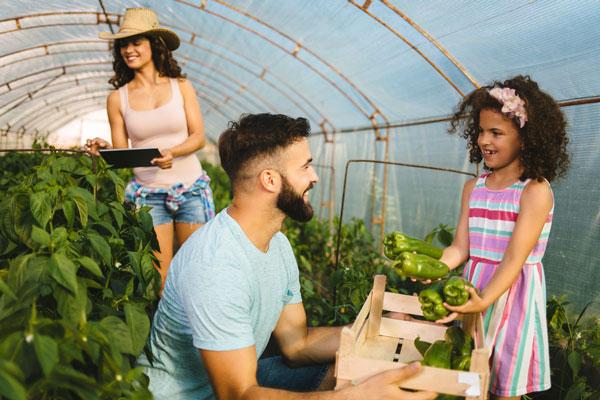
Gardening with kids can be both fun and educational. For parents, it may be an excellent way of winding off and spending more quality time with their kids, while it also presents a useful tool for those who struggle to get their kids to eat healthy food. You don’t need a large backyard or a separate savings fund for this project. Planning, preparing, tending to, and harvesting a kid-friendly garden is a great way of getting your kids active in a pastime the whole family can enjoy.
Starting out
When starting a garden of edibles, the most important thing is the location. The place should receive maximum sunlight and have quality soil that maximises the growth potential. The soil needs to be dug six to ten inches to break up the weeds and old roots when you can also strengthen its composition with a layer of an organic matter. Include your kid in drawing the plan of the future garden and help them make the most of its potential. In the northern hemisphere, the tallest plants should be planted at the north end of the garden, while permanent plants should be on the sides.
Make the site safe for kids
To keep the gardening experience safe for your kids, you need to follow some basic guidelines. These shouldn’t discourage your kids from enjoying all the benefits that come with gardening and eating fresh home-grown food. If there are trees around, make sure to prune overhanging dead branches. You can hire someone to do this, but getting a quality aluminium ladder at Bayside Scaffolding will cost you much less, and you can keep it for future garden-related projects. Also makes sure to remove other visible hazards such as beds of nettles, thorny or prickly plants, remains of old fences, etc. Finally, learn the history of the site, as this may point out to possible hazards to be concerned about, such as lead from paint, industrial contamination, remains of a building site, or likelihood of flooding after heavy rains.
Ground-level beds
A traditional edible garden will be planted in the ground, as the level site is easiest to tend to. However, if you build terraces, you can make wonderful use of a sloped area as well. While the first shape that comes in minds is a large rectangle with straight rows, a garden for kids can be designed in all shapes and sizes: veggies mixed with flowers, while fruit trees and bushes can improve the landscape backdrop. If the area you've selected for planting is currently a turf, you'll possibly need to remove some trees, sod and cultivate the soil before planting. In smaller gardens, this can be done by hand, for larger ones you might need sod cutters and rent a rototiller. Ask The Local Tree Experts if you want to know more.
Planting in raised beds
sing raised beds is another common option, which ultimately gives you more control of the garden and what grows in it. This method is typically advised for senior gardeners, as it makes everything easier to reach, but can be used in a kid-friendly garden as well, especially if the grandma or grandpa is around to help. The frames should be made of rot-resistant wood such as cedar, or materials such as concrete or recycled plastic planks. Even if the raised beds are more demanding investment-wise, in the long run, they pay off as they are easier to cultivate and eliminate the hazard of potential pollutants in the soil. On top of that, the plants are more protected from accidental trampling or crushing as the kids play around.
Kid-friendly gardening
To make sure your kid isn't overwhelmed with a seemingly endless garden in your back yard, you may start with a 3x3 area, just to spark their interest. Here your child can decide what will be grown and experiment without impacting the other plants in the garden. Increase the safety and make the gardening more interesting by purchasing child-friendly gardening tools. Spades, rakes, cultivators, and hoes can all be purchased in child sizes. You can also increase your kid's interest in gardening by making a garden patch a place of adventure. Together, you can make a small closure or a tepee and cover it with climbing beans or vines .If you want gardening tips, read more at the Planted Shack.
Plants that kids love
When choosing plants, it's important to consider those that the kids will enjoy growing the most. Children like plants with strong smells, that grow quickly and are easy to recognise. Plants with larger seeds will be easier for small hands to pick and handle. Think about sunflower, peas, pumpkins, and squash. Also include plants that can be snacked on as they grow, such as snow peas. Cherry tomatoes, lettuce, and radishes grow quickly which makes them perfect for kids that have a harder time with patience. Introducing your child into backyard gardening is a great way of creating a meaningful and educational experience for your little one. Through gardening, kids learn the life cycle process, as well as responsibility, caretaking, and environmental awareness.



























